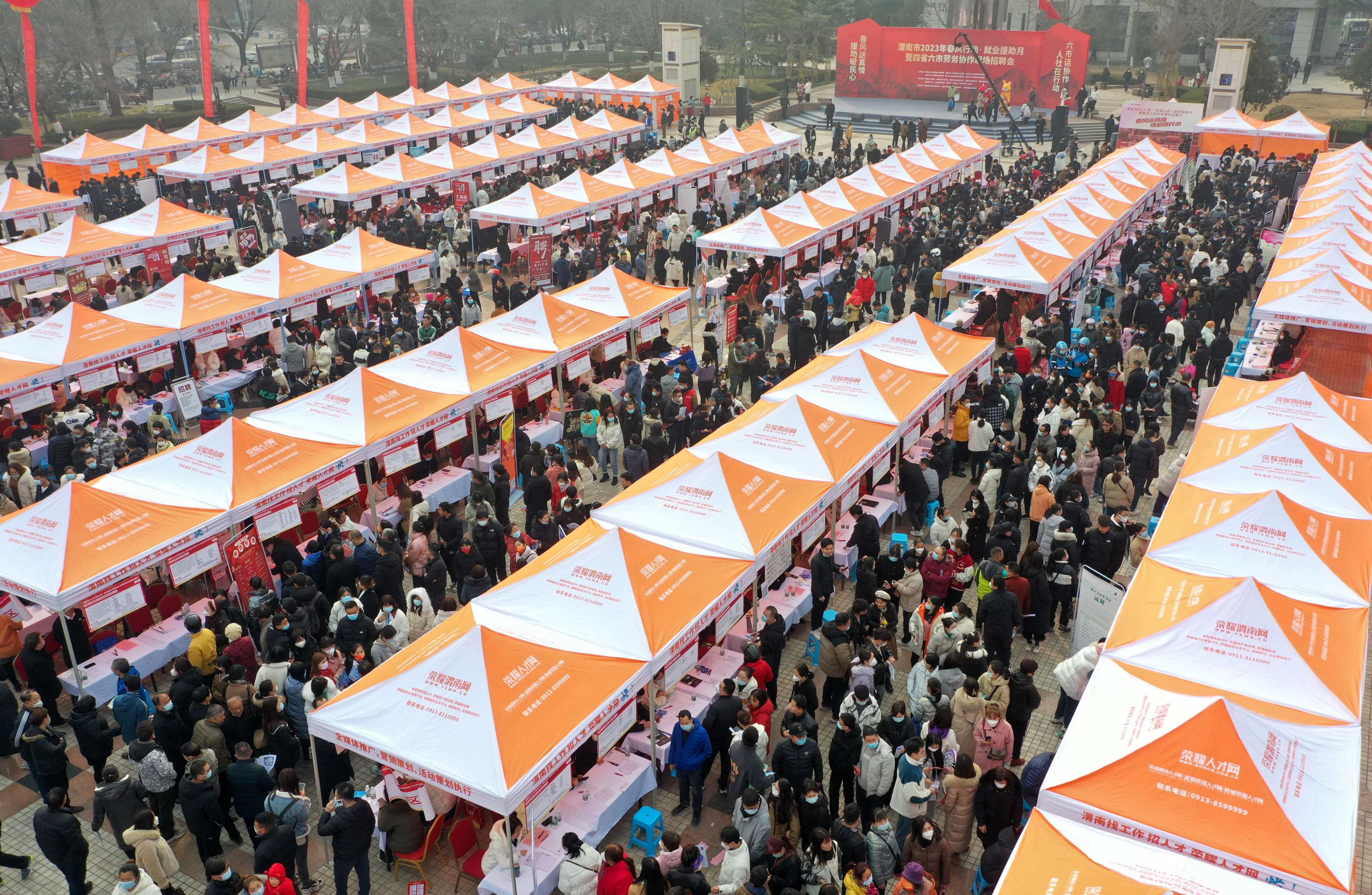The ‘Curse of 35’ Phenomenon: Chinese Millennials Face Employment Hurdles

The ‘Curse of 35’ Phenomenon: Chinese Millennials Face Employment Hurdles
In a puzzling labor market trend, an age-based hiring bias known as the ‘Age Lockout’ is gaining momentum in China, particularly affecting millennials who find themselves excluded from certain job opportunities as they hit the ‘curse of 35.’ This emerging workplace predicament has sparked concerns over age discrimination and the challenges it poses for a generation striving to secure stable employment and financial security.
For decades, millennials have been navigating a rapidly changing job landscape, marked by technological advancements and shifting economic priorities. However, the ‘Age Lockout’ phenomenon has thrown a curveball into their career trajectory. Rather than battling the traditional hurdles of skill acquisition and experience accumulation, many Chinese millennials now face the unexpected challenge of being considered ‘too old’ for certain positions before they even reach their mid-thirties.
The Age Lockout Explained
The ‘Age Lockout’ is an unofficial barrier that many Chinese employers are placing on job applicants who fall within the 30 to 35 age range. This counterintuitive hiring practice has its roots in the prevalent belief that younger employees are more adaptable to changing work environments, possess a keener grasp of modern technology, and are more open to taking on new challenges. This mindset has driven some employers to prioritize younger candidates over their older counterparts, leaving many millennials caught in a paradox where they are deemed too experienced for entry-level roles and not experienced enough for mid-level positions.
Impact on Millennial Job Seekers
As millennials advance through their twenties and into their thirties, they encounter a stark realization: their age could become an insurmountable obstacle in their quest for certain job opportunities. This realization is particularly poignant in industries that place a premium on youthful energy and the ability to swiftly adapt to technological innovations. Such industries include technology start-ups, digital marketing agencies, and e-commerce platforms, where the ‘fresh graduate’ persona has become synonymous with enthusiasm and malleability.

While some employers argue that younger workers bring a vibrant energy and creative edge to their teams, the practice of ‘Age Lockout’ has raised eyebrows among labor market experts and activists. Critics contend that it not only reinforces ageism but also disregards the valuable skills, experiences, and problem-solving capabilities that older millennials have accrued throughout their careers.
Roots of the Age Bias
The roots of this age bias can be traced back to a combination of cultural, economic, and societal factors. China’s rapid economic transformation over the past few decades has led to an intensified emphasis on innovation and staying ahead of technological trends. As a result, businesses often perceive younger employees as the ideal candidates to fulfill these demands.
Moreover, Confucian values of respect for elders have taken a backseat in modern Chinese society, particularly in urban areas. The focus has shifted towards meritocracy and results, leading to a subconscious bias in favor of youthful ambition and potential.
Shifting Perceptions: The Need for Change
The perpetuation of the ‘Age Lockout’ trend not only marginalizes a segment of the workforce but also hampers overall productivity and innovation. It fosters an environment where employees fear aging, shattering their self-confidence and contributing to stress and burnout.
However, a glimmer of change is on the horizon. Some progressive companies have started reevaluating their hiring practices, recognizing the value of intergenerational teams. They acknowledge that a diverse age range can lead to a more balanced perspective, enhancing problem-solving and decision-making processes.

Overcoming the ‘Curse of 35’
The solution to overcoming the ‘Curse of 35’ involves a multi-pronged approach encompassing employers, job seekers, and policymakers.
1. Employer Sensitization: Companies must take a proactive stance in eradicating age discrimination from their hiring processes. Emphasizing skills, experiences, and a candidate’s potential contribution to the organization, regardless of age, can foster an inclusive work culture.
2. Skills Development: Millennials need to continuously upgrade their skill sets to remain competitive in the job market. By staying informed about emerging technologies and industry trends, they can challenge the notion of obsolescence linked to age.
3. Policy Reforms: Policymakers play a pivotal role in shaping labor market dynamics. Anti-discrimination regulations need to be reinforced, and incentives for companies that embrace age diversity could be introduced to encourage more inclusive hiring practices.
4. Changing Cultural Norms: Society as a whole must work towards shifting perceptions about age and value. Celebrating the diverse contributions of employees across age groups can slowly dismantle the stereotypes associated with older workers.
Embracing Diversity for a Stronger Future
The ‘Age Lockout’ trend is a wake-up call, urging society to confront the hidden biases that permeate workplaces. Millennials, now navigating the intricate landscape of employment, have the potential to challenge and reshape the narrative. By advocating for change, both as job seekers and as employees, they can foster a more inclusive work environment that values the unique strengths of every generation.

As China’s workforce evolves, embracing diversity across age groups will be the cornerstone of progress. Breaking free from the ‘Age Lockout’ will not only empower millennials but also enrich workplaces, ensuring that the collective knowledge, experiences, and ambitions of all employees contribute to a stronger and more resilient future.



